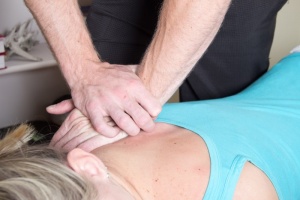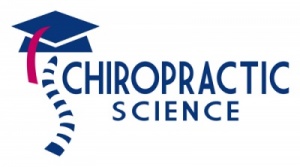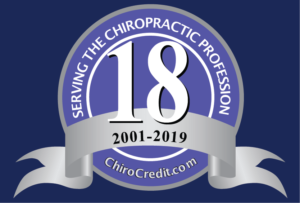 Spinal manipulation (SM) can improve function and reduce spinal disability. SM also provides pain relief for many disorders such as back pain and neck pain. Pain induces changes in both the central and peripheral nervous systems. The mechanisms by which SM alters musculoskeletal pain are still not completely known. Current evidence however suggests that SM is associated with neurophysiological responses including rapid hypoalgesia with simultaneous sympathetic and motor system excitation. Animal studies have shown that analgesia provided by joint mobilization involves serotonin and noradrenaline receptors in the spinal cord.
Spinal manipulation (SM) can improve function and reduce spinal disability. SM also provides pain relief for many disorders such as back pain and neck pain. Pain induces changes in both the central and peripheral nervous systems. The mechanisms by which SM alters musculoskeletal pain are still not completely known. Current evidence however suggests that SM is associated with neurophysiological responses including rapid hypoalgesia with simultaneous sympathetic and motor system excitation. Animal studies have shown that analgesia provided by joint mobilization involves serotonin and noradrenaline receptors in the spinal cord.
A new investigation sought to determine the response of several other biochemical markers of pain and stress to SM. Specifically, three neuropeptides (neurotensin, oxytocin, orexin A) and a glucorticoid hormone (cortisol) were studied. The authors note that the neuropeptides have been associated with hypoalgesia and pain modulation and that cortisol plays an analgesic role in the stress response. Recent theories have suggested that chronic pain could be partially maintained in a facilitated state due to maladaptive responses in the presence of recurrent stressful situations. To date there is a lack of studies analyzing these specific biomarkers in relation to SM.
The purpose of this study was to determine the effect of cervical or thoracic manipulation on neurotensin (NT), oxytocin, orexin A, and cortisol levels. Experimenters examined both spinal regions because they thought there may be a difference in anti-nociceptive effect between the cervical spine and thoracic spine.
Participants included graduate students from Spain. All subjects were asymptomatic and were excluded if there was a contraindication to manipulation, history of whiplash or surgery, pain in the last month, SM in the last 2 months. Thirty asymptomatic subjects were randomly divided into 3 groups: cervical manipulation (n = 10), thoracic manipulation (n = 10), and non-manipulation (control) (n = 10). Although it is not explicitly stated in the article, I presume the manipulations were performed by physical therapists since the lead authors were PT’s. Manipulations consisted of supine ‘anterior’ thoracic spine manipulations, and rotary type cervical manipulations. Blood samples were extracted before, immediately after, and 2 hours after each intervention by way of venipuncture of the cephalic vein. Neurotensin, oxytocin, and orexin A were determined in plasma using enzyme-linked immuno assay. Cortisol was measured by microparticulate enzyme immuno assay in serum samples.
Results
Neurotensin (NT)
- Statistically significant increases in neurotensin occurred in both the thoracic and cervical manipulation groups compared to controls post-intervention with the greatest increase occurring immediately following manipulation
- Cervical spine manipulation produced a slightly larger increase in neurotensin
Orexin A
- No statistically significant changes were noted in orexin A levels following treatment
Oxytocin
- Statistically significant increases in oxytocin occurred in both the thoracic and cervical manipulation groups compared to controls post-intervention with the greatest increase occurring immediately following manipulation
- Cervical spine manipulation produced a significantly larger increase in oxytocin compared to thoracic manipulation
Cortisol
- A significant increase in cortisol occurred in the cervical manipulation group compared to controls and the thoracic manipulation group immediately post-intervention
- However, a significant decrease in cortisol was found at 2 hrs post intervention in the thoracic SM group compared with pre-intervention values
- A non-significant decrease in cortisol was found also found at 2 hrs post intervention in the cervical SM group compared with pre-intervention values
Discussion
NT is an endogenous peptide with broad spectrum of central and peripheral activities, including modulation of pain signal transmission and perception. NT behaves as a neurotransmitter in the brain and as a hormone in the gut. Because of its association with a wide variety of neurotransmitters, NT has been implicated in the pathophysiology of several CNS disorders such as schizophrenia, drug abuse, Parkinson’s disease (PD), pain, central control of blood pressure, eating disorders, as well as, cancer and inflammation. Note that the antinociceptive effects of NT are independent from opioid antinociception.
Increased oxytocin following SM could be partly responsible for the analgesic effect linked to manual therapy techniques due to the activation of descending pain-inhibitory pathways.
Cortisol is a potent anti-inflammatory that functions to mobilize glucose reserves for energy and modulate inflammation. Ultimately, a prolonged or exaggerated stress response may perpetuate cortisol dysfunction, widespread inflammation, and pain. SM in this study led to an immediate increase in cortisol followed by a significant 2 hour decrease in levels with thoracic manipulation and a decrease in 2 hr levels with cervical manipulation.
Key Points
- SM can modify several biochemical markers of pain and stress
- These findings suggest that descending inhibitory pathway mechanisms may be involved in the physiological effects that follow SM
- The effect size for the cervical manipulation group was larger than that for the thoracic manipulation group suggesting an increase in the activation of the possible descending inhibitory pathway mechanisms after cervical manipulation compared to thoracic manipulation


